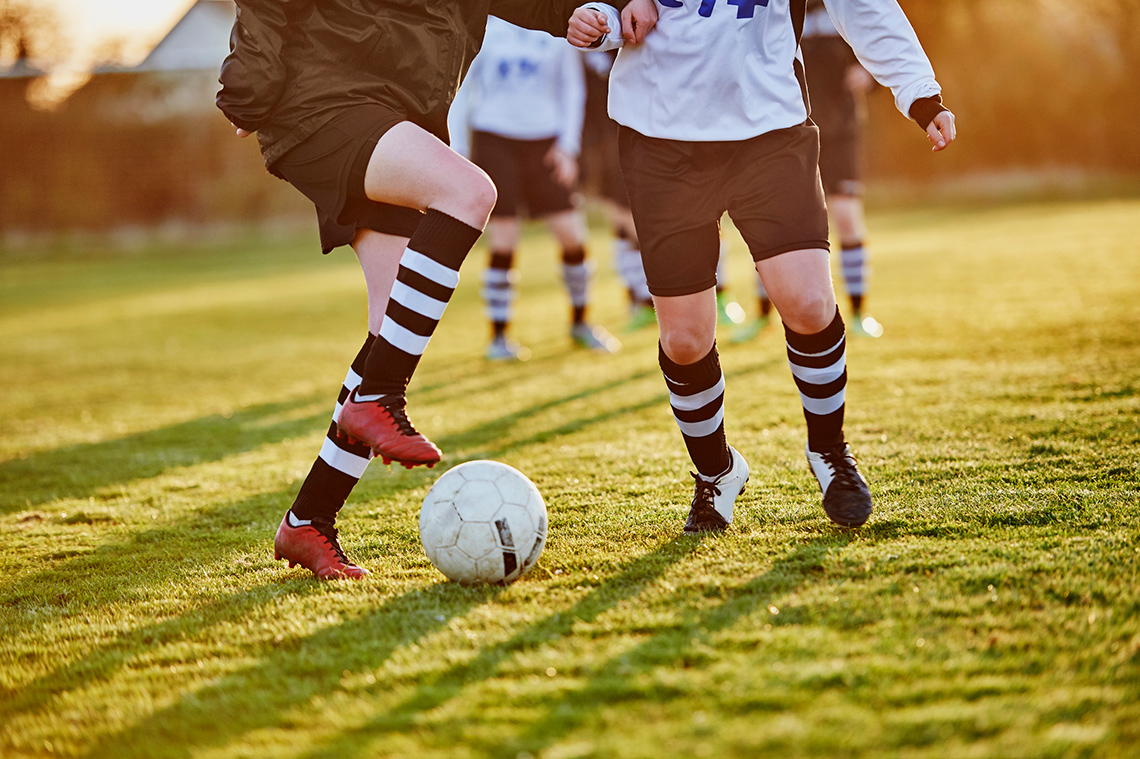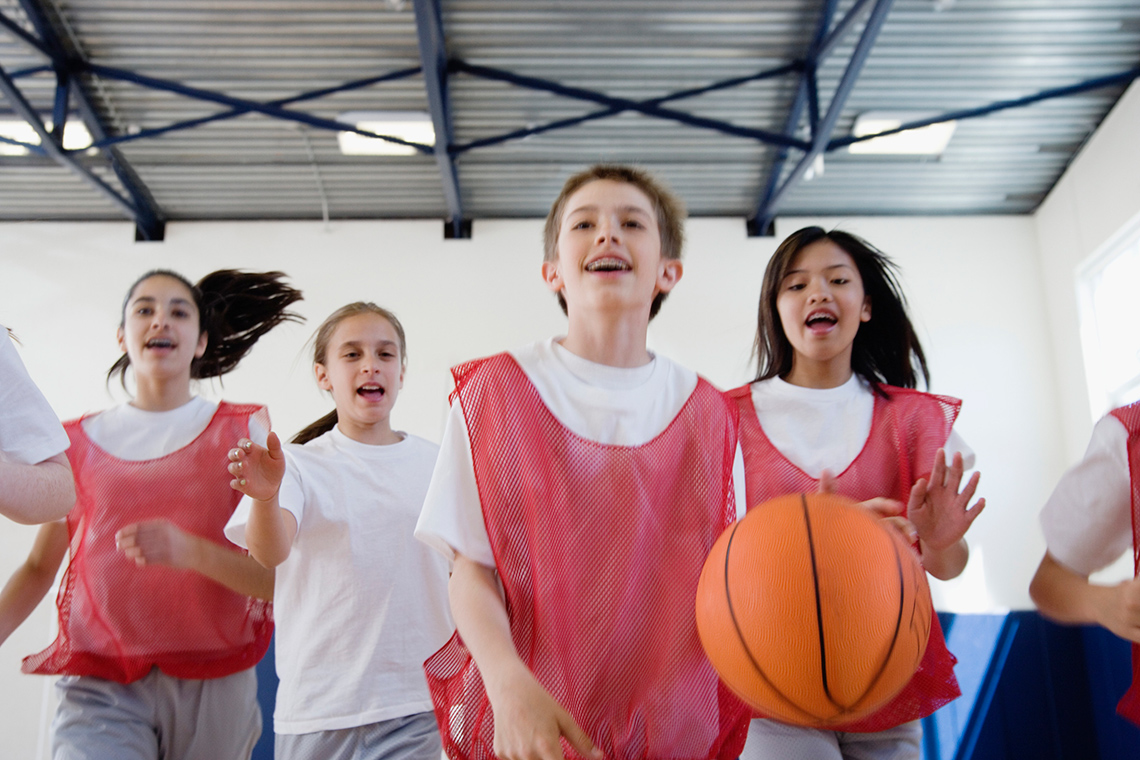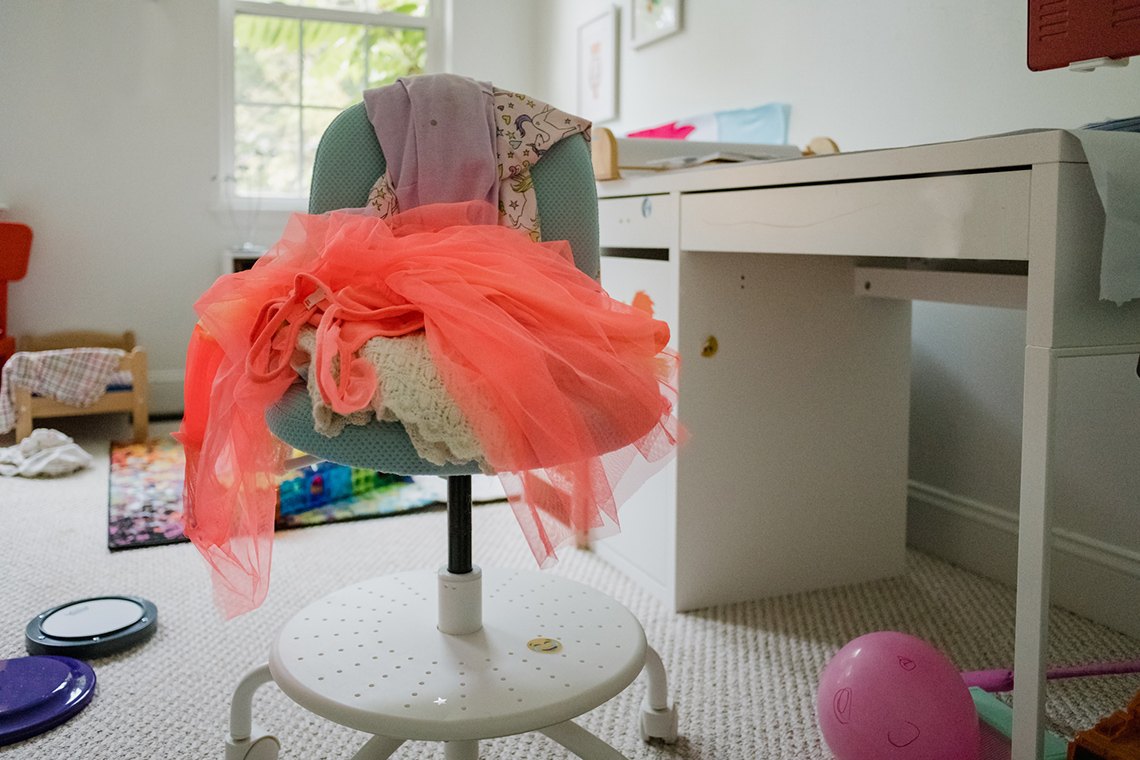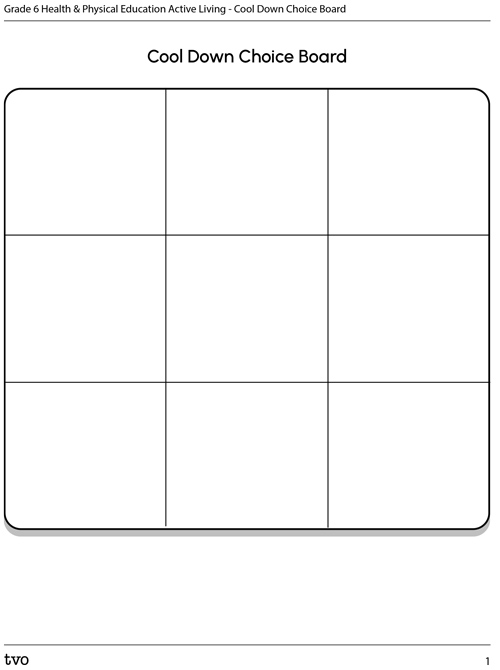Minds On
Warming up

One of the most important parts of participating in physical activity is doing so in a safe manner that minimizes a person’s risk of injury.
It is important to not only understand the rules and components of any activity, but to also prepare the body for the increased workload that will happen.
One method of preparing the body is through a warm up. Usually these include active movements that allow your heart rate to raise a little and increases blood flow to the muscles that are working.
What are the various parts of your body that you think would require a proper warm up before participating in your favourite activity?
- What types of exercise, stretches, or movements have you used in the past?
- What types of exercise, stretches, or movements might you know to prepare your body for increased movement?
Choose 5 different body parts to warm up.
Complete the Warm Up Chart in your notebook or using the following fillable and printable document. If you would like, you can use speech-to-text or audio recording tools to record your thoughts. The first row has been completed as an example for you.
Press the ‘Activity’ button to access Warm Up Chart.
| Body Part | Sample Movement | Movement Explanation |
|---|---|---|
| Arms | Arm Circles | Ensure I have at least 1m of space on each side of my body. Slowly rotate your arms forward 10 times, followed by 10 rotations backwards. This exercise will help prepare my shoulders for the movement involved with running, throwing and/or overhead activities. |
Once you have created your warm up, perform the exercises in a safe space.
Safety
Before you begin, consider these safety precautions:
Action
Identifying possible safety hazards
Participating in physical activity can occur in a variety of settings: indoors, outdoors, at home, in a gymnasium etc.
No matter the setting, you should always be given proper instructions, and feel comfortable with the task before attempting any new activity.
Consider the following factors that could potentially affect the safety of your participation within a particular activity.
Press the following tabs to access the factors that could affect safety.
These may include factors such how hot or cold it is, whether thunder or lightning is nearby, slick surfaces due to rain, sun preparedness (wearing hats, sunscreen), hydration etc.
Where are the facilities you’re using? For example: Are you at home? Indoors? Outdoors? In a large or small space?
How well do you know/can apply the rules of the activity? Were they explained to you in a detailed manner?
What are you using for equipment? Is it found materials in your space?
Consider proper warm up routines. Are you wearing comfortable clothing?
Consider the factors identified above. Using the following scenarios:
- Identify the safety concern.
- Provide a possible solution to correct the safety issue.
Scenario One

After school Learner 1 starts a friendly soccer game on the local field and invites Learner 2 to play. It rained about 30 minutes ago. Learner 2 sees puddles on the grass and they’re wearing the sandals they had on all day. Learner 2 really wants to play but has some concerns.
What is the safety concern?
What is a possible solution to correct this concern?
Scenario Two

Learner 1 had a busy day and arrive late to their basketball practice. They notice the team has already warmed up and have moved on to defensive drills. Learner 1 forgot to pack their shorts and join practice wearing the jeans and a sweater they had on earlier. Because they were late, they’re confused about what the team is working on and no one has time to explain it to them. Learner 1 is not confident about what’s going on and are really nervous about making a mistake.
What is the safety concern?
What is a possible solution to correct this concern?
Scenario Three

Someone in Learner 1’s household wants to toss a frisbee with them indoors because it’s raining outside. They choose to do this in their bedroom, with toys all over the floor and other furniture in their way. Learner 1 also notice the disc has been damaged in several places and as a result has some sharp edges.
What is the safety concern?
What is a possible solution to correct this concern?
Let’s exercise!
Explore one or more of the following exercises.
Safety reminder
Always be sure to do your safety checks!
Press the following tabs to access the exercises.
Collect a ball or an item that can be used as a ball nearby (e.g., rolled up socks).
Option 1: Place the object on the floor and perform up to 30 toe touches with that object alternating legs each time. Take a 30 second break and repeat this cycle again.
Option 2: Holding the ball with both hands, lift the ball as high into the air as you can and hold for up to 10 seconds. Bring the ball back down and repeat this activity up to 10 times.
Option 1: From a standing or sitting position, place your arms out to the side of your body as far as you can. Hold this position for up to 10 seconds. Move your arms in a wide, circular motion slowly for up to 10 circles. Repeat up to 10 times.
Option 2: Perform 10 lateral lunges on each leg. To perform each lunge, while standing, step to the right, keeping toes pointed straight ahead and feet flat. Move your body weight onto your right leg, while keeping the left leg straight. Squatting as low as possible, keep the left leg straight and hold the position for 2 seconds. Return to standing position.
Option 1: Perform 20 Woodchops on each side of your body. This will help give you upper body rotational strength to toss items further. To do this bend your knees slightly (if possible). Extend your arms as high as you can go across your body. Pull down and lower your arms diagonally to the opposite end of your body. Repeat 20 times before moving your starting position to the opposite side of your body.
Option 2: From a seated position, perform 20 Woodchops on each side of your body. This will help give you upper body rotational strength to toss items further. To do this extend your arms as high as you can go across your body. Pull down and lower your arms diagonally to the opposite end of your body. Repeat 20 times before moving your starting position to the opposite side of your body.
Consolidation
Cooling down choice board

After any activity involving sustained physical activity, it is important for your body to recover effectively in an effort to minimize injury. At this point, you want to perform activities that will assist to slowly lower your body’s heart rate and stretch muscles that are already warm.
Can you think of some stretches that would be suitable for a full body cool down?
Create a 3X3 Choice Board of stretches that you may already know or have done before.
Some example cool down stretches can include:
- Lying down and bringing the knee to the chest while holding the back of the leg (hold for 5 seconds)
- Standing and lifting one bent leg until it touches the backside, holding there 5 seconds.
- Sitting with toes touching each other, using elbows to press knee gently toward the ground (hold for 5 seconds)
List one stretch in each box that can be held for at least up to 10 seconds. Try to target each body area with stretches that you can accomplish successfully.
Complete the Cool Down Choice Board in your notebook or using the following fillable and printable document. If you would like, you can use speech-to-text or audio recording tools to record your thoughts.
Once you’ve finished your Choice Board, try five of the stretches you’ve chosen to complete your personal cool down for today’s lesson.
The best thing is you can now refer to your Choice Board in the future for an effective cool down!
Reflection
As you read through these descriptions, which sentence best describes how you are feeling about your understanding of this learning activity? Press the button that is beside this sentence.
I feel...
Now, record your ideas using a voice recorder, speech-to-text, or writing tool.
